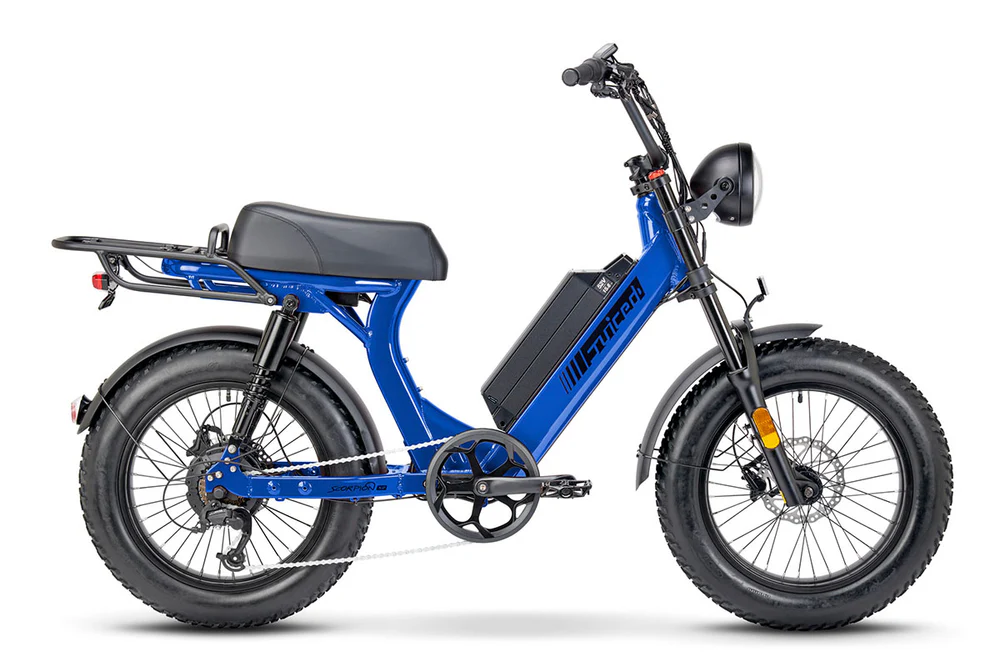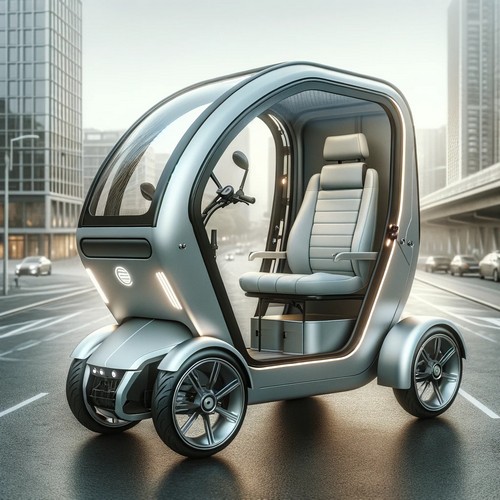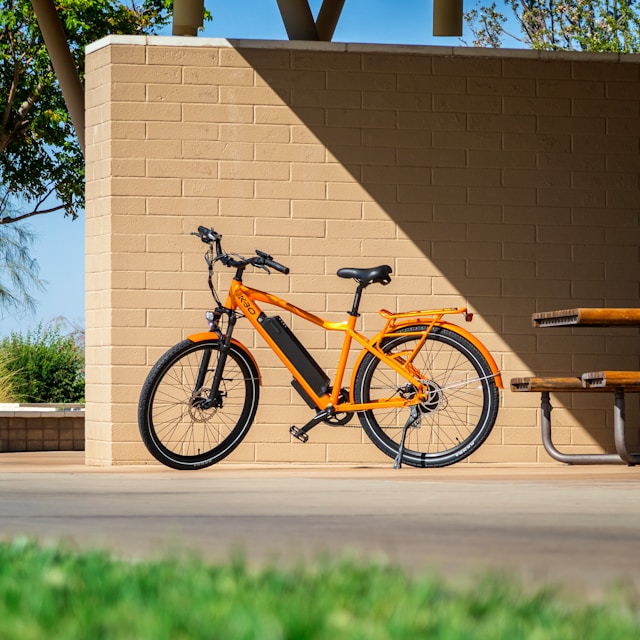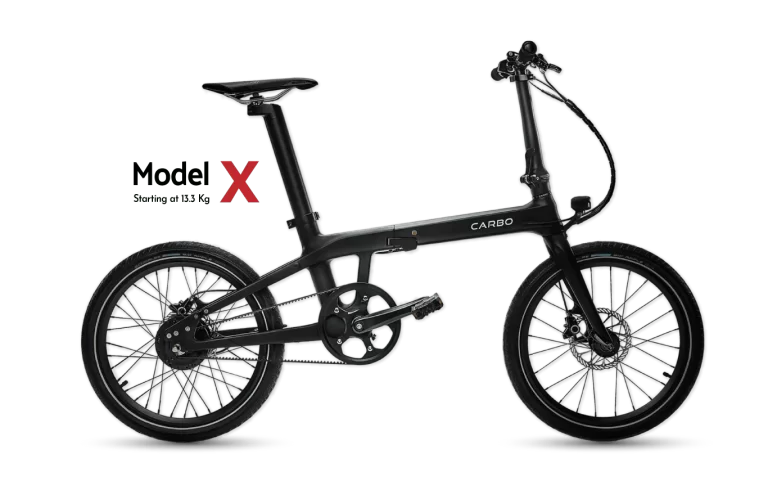Electric Mopeds vs. Gas Mopeds – The Ultimate Showdown
Stuck in traffic? Ditch the four wheels and join the micro mobility revolution! Mopeds, those zippy two-wheeled vehicles, are becoming increasingly popular for navigating city streets and congested commutes. They offer a fun, fuel-efficient way to get around, often weaving through traffic jams and finding convenient parking spots that leave cars longing.
But the moped world itself is facing a friendly competition. With rising gas prices, environmentally conscious consumers are turning towards electric mopeds. These silent steeds boast zero emissions and the convenience of charging at home. Yet, the debate between electric and gas mopeds rages on. Can electric mopeds keep up with gas-powered options on the highway Are they powerful enough for two riders ? What about upfront costs and long-term maintenance
This guide will delve into the world of electric vs. gas mopeds, dissecting their pros and cons to help you decide which option best suits your needs and riding style. We’ll explore factors like performance, affordability, environmental impact, and practicality, equipping you with the knowledge to navigate the exciting world of micromobility.
Key Takeaways
Choosing between an electric and gas moped can feel like navigating a busy intersection. To help you steer towards the right choice, here’s a breakdown of the key differences:
- Power and Performance: Gas mopeds typically offer higher top speeds and ranges compared to electric mopeds. However, electric motors deliver instant torque for a quick jump off the line.
- Environmental Impact: Electric mopeds win hands down in this category, producing zero tailpipe emissions. Gas mopeds contribute to air pollution, a significant health concern in many areas.
- Maintenance Needs: Electric mopeds are the clear winner when it comes to maintenance. Their motors have far fewer moving parts compared to gas engines, translating to lower maintenance costs in the long run.
- Budget: Electric mopeds often have a higher upfront cost than gas mopeds. However, consider the long-term savings on electricity versus gas prices, and potential government incentives for electric vehicles.
- Fueling and Charging: Gas mopeds offer the convenience of readily available gas stations, while electric mopeds require charging at home or designated stations. Charging times can vary depending on the moped and charger, but they generally take longer than filling up a gas tank.
- Intended Use: If your daily commute falls within the typical range of electric mopeds (20-50 miles) and you prioritize eco-friendly transportation, an electric moped might be ideal. Gas mopeds are a better option for longer journeys or if a wider range of fueling stations is crucial.
- Additional Considerations: Electric mopeds might have weight limitations that affect passenger capacity. Gas mopeds often have a dedicated passenger seat, but always check weight limits for safe riding. Both electric and gas mopeds require basic safety gear like helmets.
RELATED CONTENT – Complete Guide to Electric Bike Charging: Tips, Tricks & Best Practices
Electric vs. Gas Mopeds: A Head-to-Head Comparison
The rumble of a gas engine versus the quiet whir of an electric motor – it’s the first point of distinction you’ll encounter in the electric vs. gas moped showdown. Let’s delve into the heart of these two options, exploring their power sources, performance capabilities, and range limitations.
Electric Mopeds: Silent Power with Range Considerations
Electric mopeds are propelled by electric motors powered by rechargeable batteries. These motors offer a smooth, quiet ride with instant torque, making them perfect for navigating city streets and stop-and-go traffic. However, battery capacity plays a crucial role in range. Most electric mopeds can travel between 20 and 50 miles on a single charge, with some higher-end models reaching up to 100 miles. This range might not be ideal for long highway journeys, but for zipping around town or tackling your daily commute, it can be quite sufficient.
Here’s where the topic of “electric moped top speed vs gas moped top speed on highway” comes in. Due to their focus on urban riding, electric mopeds typically have a top speed of around 30 mph, with some reaching upwards of 45 mph. This falls short of gas mopeds that can often reach highway speeds, depending on engine size.
Gas Mopeds: Traditional Power with Highway Potential
Gas-powered mopeds rely on internal combustion engines, similar to those found in motorcycles. Engine sizes typically range from 49cc to 150cc, with larger engines offering more power and higher top speeds. This translates to greater flexibility, allowing you to tackle city streets and even venture onto highways, depending on local regulations (always check your local laws before using a moped on a highway). Gas mopeds boast impressive gas mileage, often achieving between 50 and 100 miles per gallon. However, keep in mind fluctuating gas prices and the need for regular maintenance, including oil changes and spark plug replacements.
RELATED CONTENT – Choosing the Perfect Electric Commuter Bike
RELATED CONTENT – Top Electric Scooters for Adults
Cost and Affordability: The Long-Term Equation
The battle between electric and gas mopeds extends beyond just performance. Let’s shift gears and analyze the financial aspects, considering upfront costs, ongoing expenses, and potential savings.
Electric Mopeds: Higher Initial Investment, Lower Long-Term Costs
Electric mopeds generally have a higher initial price tag compared to gas mopeds. However, several factors can offset this cost over time.
- Government Incentives: In some regions, government incentives like tax credits or rebates can significantly reduce the upfront cost of purchasing an electric moped. Be sure to research any applicable incentives in your area.
- Fuel Savings: Here’s where the war on “gas moped vs electric moped gas prices” is truly won. Electric mopeds, powered by electricity, offer significant savings compared to gas-powered options. The cost of charging an electric moped at home is a fraction of the price you’d pay to fill up a gas tank. Let’s say you pay $0.15 per kilowatt-hour (kWh) for electricity and your electric moped has a battery capacity of 1 kWh. To fully charge the battery, it would cost just $0.15! Now compare that to filling up a gas moped, and the long-term savings become evident. (Of course, charging costs can vary depending on electricity rates in your area.)
Addressing the Charging Cost Concern:
Many potential electric moped riders worry about the electric moped charging cost at home. The good news is, most electric mopeds can be conveniently charged at home using a standard household outlet. A full charge typically takes a few hours, allowing you to top up overnight and be ready to roll in the morning. Public charging stations are also becoming increasingly available, offering additional charging options on the go.
Gas Mopeds: Lower Upfront Cost, Higher Ongoing Expenses
Gas mopeds typically boast a lower initial purchase price compared to electric models. However, this advantage fades over time due to ongoing expenses:
- Gas Costs: As mentioned earlier, gas prices fluctuate, and filling up a gas moped can become a recurring cost, especially with frequent riding.
- Maintenance Costs: Gas mopeds require regular maintenance, including oil changes, spark plug replacements, and other potential repairs. These maintenance costs can add up over time.
While electric mopeds might have a higher upfront cost, the long-term savings on electricity and potentially lower maintenance expenses make them a compelling choice for budget-conscious riders, especially those who primarily use their mopeds for shorter commutes or errands around town.
RELATED CONTENT – Electric Bikes vs Electric Scooters: Which is Better?
RELATED CONTENT – Electric Bikes for Teens Buying Guide
Electric Mopeds vs Gas Mopeds Carbon Footprint
As environmentally conscious consumers, we increasingly consider the impact our transportation choices have on the planet. This is where the stark contrast between electric and gas mopeds becomes truly apparent. Let’s delve into the environmental impact of each option.
Electric Mopeds: Champions of Clean Air
Electric mopeds are champions of clean air. They operate with zero tailpipe emissions, meaning they don’t release harmful pollutants like nitrogen oxide and carbon monoxide into the atmosphere. This significantly reduces their carbon footprint, making them a far more sustainable choice. By opting for an electric moped, you’re actively contributing to a cleaner, healthier environment for yourself and your community.
Here’s a bonus perk: Electric mopeds are also significantly quieter than their gas-powered counterparts. This translates to less noise pollution in our cities, creating a more peaceful soundscape for everyone.
Gas Mopeds: The Environmental Cost of Convenience
Gas-powered mopeds, while convenient, come with a significant environmental cost. They contribute to air pollution by releasing harmful emissions like nitrogen oxide, carbon monoxide, and hydrocarbons. These emissions can exacerbate respiratory problems and contribute to climate change. Additionally, the production and refining of gasoline itself carries an environmental footprint.
While gas mopeds might seem like a practical choice in the short term, their impact on air quality cannot be ignored. If you’re looking for a sustainable transportation option, electric mopeds are a clear winner.
RELATED CONTENT – How Does Cost of Owning an Electric Bike Compare to Car or Regular Bike?
Electric Mopeds vs Gas Mopeds Maintenance
Keeping your moped running smoothly is essential for a safe and enjoyable ride. But the level of effort required for maintenance differs significantly between electric and gas models. Let’s explore the contrasting needs of each.
Electric Mopeds: Less Fuss, More Fun
Electric motors are the epitome of low maintenance. Unlike gas engines with their intricate systems of pistons, valves, and carburetors, electric motors have far fewer moving parts. This translates to significantly less maintenance for electric mopeds.
Here’s the good news: You can say goodbye to messy oil changes, frustrating spark plug replacements, and valve adjustments. Electric mopeds primarily require routine checks of tire pressure, brakes, and overall condition. Occasionally, you might need to replace the drive belt or brake pads, but these are relatively simple and inexpensive procedures. Overall, electric mopeds offer a welcome respite from the constant tinkering associated with gas engines, allowing you to spend more time riding and less time wrenching.
Gas Mopeds: Regular Maintenance is Key
Gas-powered mopeds require regular maintenance to ensure optimal performance and longevity. This includes:
- Oil Changes: Regular oil changes are crucial for lubricating the engine components and preventing wear and tear. Depending on your riding habits, you might need an oil change every 1,000 to 3,000 miles.
- Spark Plug Replacements: Spark plugs wear out over time and need to be replaced to maintain proper ignition. Consult your moped’s manual for the recommended replacement schedule.
- Air Filter Cleaning: A clean air filter ensures smooth engine operation and optimal fuel efficiency. You’ll need to clean or replace the air filter periodically depending on your riding environment.
- Other Potential Maintenance: Beyond the routine procedures mentioned above, gas mopeds might require additional maintenance like valve adjustments, carburetor cleaning, or clutch repairs depending on the specific model and usage.
While some riders enjoy the hands-on aspect of maintaining their gas mopeds, these ongoing expenses and time commitment can be a deterrent for others. If convenience and minimal maintenance are priorities, electric mopeds offer a clear advantage.
Electric Mopeds vs Gas Mopeds: Safety & Regulations:
Safety should always be your top priority, regardless of whether you choose an electric or gas moped. Here’s a breakdown of safety considerations and potential licensing requirements for both options.
Electric Mopeds: Safety First, Regulations Vary
Electric mopeds typically come equipped with basic safety features like headlights, taillights, and brakes. Some models might offer additional features like turn signals and mirrors, enhancing your visibility on the road.
Licensing Requirements: Licensing requirements for electric mopeds vary depending on your location. In some areas, electric mopeds might be classified as bicycles and require no specific license, while others might require a moped license or motorcycle endorsement. It’s crucial to research the regulations in your area before hitting the road.
Safe Riding Practices: Regardless of licensing requirements, always prioritize safe riding practices. Wear a helmet that meets safety standards, and consider protective gear like gloves, elbow pads, and knee pads. Familiarize yourself with the traffic laws and regulations for mopeds in your area. Remember, safety is paramount, so ride defensively and avoid weaving through traffic or exceeding the speed limit.
Gas Mopeds: Similar Safety Considerations, Potential Licensing Differences
Gas mopeds share similar safety considerations as electric mopeds. Always wear a helmet and consider additional protective gear. Ensure your moped is in proper working order, with functioning brakes and lights.
Licensing for Gas Mopeds: Licensing requirements for gas mopeds typically follow the same principles as electric mopeds. They might be classified as mopeds requiring a specific license or fall under motorcycle endorsement regulations. Research the specific laws in your area to ensure you’re operating your gas moped legally.
Remember, both electric and gas mopeds share the road with cars and other vehicles. Ride responsibly, obey traffic laws, and prioritize safety for yourself and others.
RELATED CONTENT – Are There Age Restrictions for Riding an Electric Bike?
RELATED CONTENT- Ebike Rules of the Road: Where Can You Ride an Ebike?
Electric Mopeds vs Gas Mopeds Capacity & Functionality
When choosing between an electric and gas moped, consider how much you plan to carry and whether you’ll need to accommodate a passenger. Let’s delve into the capacity and functionality of each option.
Electric Mopeds: Weight Limits and Passenger Considerations
Electric mopeds typically have a lower weight capacity compared to gas mopeds. This is due to the weight of the battery pack, a key component in electric vehicles. While weight limits vary depending on the model, most electric mopeds can comfortably handle a single rider and a limited amount of cargo.
Riding Double on an Electric Moped: Passenger capacity can also be a deciding factor. Some electric mopeds are designed for single riders only, while others might have a designated passenger seat with footrests. It’s crucial to check the weight limit and passenger capacity of your chosen electric moped before hitting the road with a companion.
Gas Mopeds: Generally More Capable for Two
Gas mopeds typically boast a higher weight capacity than electric mopeds. This allows them to accommodate a rider and a passenger more comfortably. Many gas mopeds come equipped with a dedicated passenger seat and footrests, making them a viable option for short rides with a companion.
However, it’s important to remember that even with gas mopeds, always adhere to the weight limit and ensure your passenger wears proper safety gear like a helmet.
Choosing the Right Capacity for Your Needs:
If you plan on carrying cargo or riding with a passenger frequently, a gas moped might be the better choice due to its higher weight capacity and passenger capabilities. However, if you’ll primarily be riding solo and prioritize a lighter, more nimble vehicle, an electric moped could be a great option.
Electric Moped vs. Gas Moped: A Comparison Chart
| Feature | Electric Moped | Gas Moped |
|---|---|---|
| Power Source | Electric Motor (Battery Powered) | Internal Combustion Engine |
| Performance | Smooth acceleration, quiet operation, lower top speed (typically 30-45 mph) | May require gas for highway use, higher top speed (depending on engine size) |
| Range | 20-50 miles on a single charge (higher-end models up to 100 miles) | 50-100 miles per gallon (depending on engine size and riding habits) |
| Cost | Higher upfront cost, lower long-term operating costs (electricity vs. gas) | Lower upfront cost, higher long-term operating costs (gas and maintenance) |
| Environment | Zero tailpipe emissions | Contributes to air pollution |
| Maintenance | Low maintenance (fewer moving parts) | Regular maintenance required (oil changes, spark plugs, etc.) |
| Safety | Basic safety features (headlights, taillights, brakes) | Basic safety features (headlights, taillights, brakes) |
| Regulations | Licensing requirements vary by location (may not require a license in some areas) | Licensing requirements vary by location (may require moped license or motorcycle endorsement) |
| Capacity | Lower weight capacity (consider weight of battery) | Higher weight capacity |
| Functionality | May not be suitable for two riders (check weight limit and passenger capacity) | Typically suitable for rider and passenger (check weight limit) |
| Fueling | Charge at home with standard outlet | Fill up at gas stations |
| Long-Term Savings | Potential for significant savings on electricity compared to gas prices | Fluctuating gas prices, ongoing maintenance costs |
Additional factors to consider:
- Government Incentives: Electric mopeds may qualify for tax credits or rebates in some regions.
- Charging Availability: Public charging stations are becoming increasingly available for electric mopeds.
- Personal Needs: Consider your typical riding habits, budget, and environmental priorities.
By carefully evaluating these factors and referring to this comparison chart, you can make an informed decision on whether an electric or gas moped is the right choice for you.
Top Three Electric Mopeds for Adults
1. Super73 RX Mojave

Overview: The Super73 RX Mojave is a high-performance electric moped that boasts a powerful motor, impressive range, and stylish design.
Features:
- Powerful 750W motor with a top speed of 28 mph
- Extended range of up to 40 miles on a single charge
- Large 24″ x 3″ knobby tires for off-road capability
- Full suspension for a comfortable ride
- Hydraulic disc brakes for confident stopping power
- LED headlight, taillight, and turn signals
- Smartphone app connectivity for monitoring and diagnostics
Pros:
- Excellent performance for both on-road and off-road riding
- Long range for an electric moped
- Comfortable and stylish design
- App connectivity for added convenience
Cons:
- Higher price point compared to some electric mopeds
- Heavier weight (around 100 lbs)
Price Range: $1,999 (discounted price) Where to Buy: Super73
2. Juiced Bikes Scorpion X2

Overview: The Juiced Bikes Scorpion X2 is a versatile electric moped that offers a comfortable ride, ample cargo space, and good performance
Features:
- 1000W geared hub motor with a top speed of 28 mph
- Up to 55 miles of range on a single charge
- Dual suspension for a smooth ride
- All-terrain knobby tires for various terrains
- Large cargo rack and optional passenger seat
- LED headlight, taillight, and turn signals
Pros:
- Comfortable and stable ride
- Ample cargo space and passenger option
- Good range and performance
- All-terrain capability
Cons:
- Not the most stylish design
- Heavier weight (around 90 lbs)
Price Range: $1,699 Where to Buy: Juiced Bikes
3. Aventura X Electric Moped

Overview: The Aventura X Electric Moped is a street-legal electric moped known for its classic design, comfort, and decent performance.
Features:
- 750-watt brushless DC motor with a top speed of 30 mph
- Up to 40 miles of range on a single charge (depending on model)
- 14-inch wheels with wide tires for a stable ride
- Hydraulic disc brakes for confident stopping power
- LED headlight, taillight, turn signals, and horn
- Comfortable, padded seat with backrest
- Lockable storage compartment under the seat
Pros:
- Classic moped design with comfortable ergonomics
- Decent range for everyday commuting
- Street legal with features like turn signals and horn
- Lockable storage compartment for added convenience
Cons:
- Lower top speed compared to some electric scooters
- Might not be ideal for off-road riding due to wheel size
- Price varies depending on model (typically starts around $3,290 MSRP)
Where to Buy: Aventura Motors
Additional Tips:
- When searching for electric mopeds online, look for keywords like “moped” or “street legal” in the product descriptions to ensure you’re considering mopeds and not electric scooters.
- Manufacturer websites and reputable electric moped retailers are good places to start your research.
Remember, test riding different models if possible to get a feel for which one best suits your needs and riding style.
FAQs
The range of electric mopeds varies depending on several factors, including battery capacity, motor power, and riding conditions. Most electric mopeds offer a range of 20-50 miles on a single charge, with some higher-end models reaching up to 100 miles. This range is perfect for zipping around town or tackling your daily commute. However, for longer journeys or highway rides, you might need to factor in charging stops.
Charging times for electric mopeds also depend on the battery capacity and your charger’s power output. Typically, a full charge using a standard household outlet can take anywhere from 2 to 8 hours. However, many newer models come with fast-charging capabilities that can significantly reduce charging times. Public charging stations, while not as ubiquitous as gas stations yet, are becoming increasingly available, offering another convenient option for topping up your charge on the go.
Electric mopeds prioritize efficiency and urban riding. Their focus on city commutes is reflected in their typical top speeds of around 30-45 mph, with some models reaching higher. This falls short of gas mopeds that can often achieve highway speeds, depending on engine size. While some electric mopeds might be suitable for occasional highway use on designated low-speed sections, they might not be the safest or most efficient option for frequent highway travel.
Whether you can take two people on an electric moped depends on the specific model and its weight limit. Some electric mopeds are designed for single riders only, while others might have a designated passenger seat with footrests. It’s crucial to check the weight limit and passenger capacity information for your chosen electric moped before hitting the road with a companion. Remember, safety is paramount, so ensure your passenger wears proper safety gear like a helmet.
One of the significant advantages of electric mopeds is their low maintenance requirements. Unlike gas engines with their intricate systems requiring oil changes, spark plug replacements, and other adjustments, electric motors have far fewer moving parts. This translates to a significant reduction in maintenance costs for electric mopeds. You’ll primarily need to focus on routine checks of tire pressure, brakes, and overall condition. Occasionally, you might need to replace the drive belt or brake pads, but these are relatively simple and inexpensive procedures compared to the ongoing maintenance needs of gas mopeds.
Conclusion
Electric and gas mopeds each offer distinct advantages and disadvantages. By carefully considering the information presented here, you can make an informed decision that aligns with your budget, riding habits, and environmental priorities.
Electric Mopeds:
- Pros: Quiet operation, lower emissions, lower maintenance costs, potential for tax credits and rebates
- Cons: Lower range and top speed compared to gas mopeds, longer charging times, may not be suitable for two riders (depending on model)
Gas Mopeds:
- Pros: Typically higher range and top speed than electric mopeds, readily available refueling stations, often suitable for two riders (check weight limits)
- Cons: Emissions contribute to air pollution, higher maintenance costs due to gas engine, fluctuating gas prices
Ultimately, the best choice for you depends on your individual needs.
So, what are you waiting for? Share your thoughts in the comments below! Are you leaning towards electric or gas? What factors are most important to you in a moped? Let’s get the conversation rolling and help each other navigate the exciting world of mopeds!
External Sources:
- Electric Moped Benefits:
- Lower Emissions: Electric vehicles produce zero tailpipe emissions, reducing air pollution in your community. Learn more about the environmental benefits of electric vehicles:
- Lower Maintenance Costs: Compared to gas engines with their oil changes, spark plugs, and other components, electric motors require minimal maintenance. See a cost comparison between electric and gas vehicles: AAA – Electric Cars vs. Gas Cars: A Cost Comparison [invalid URL removed]
- Tax Credits and Rebates: The US government offers tax credits and rebates for purchasing electric vehicles, including mopeds. Find out if you qualify for any incentives
- Gas Moped Considerations:
- Gas Emissions: Gas-powered engines contribute to air pollution, which can have negative health and environmental impacts. Here’s an article on the effects of air pollution:
Remember, these are just a starting point, and there are many other great electric and gas mopeds on the market. Do your research and consider factors like your budget, riding habits, and desired features before making a final decision. Also, be sure to check the regulations in your area to ensure you understand any licensing requirements for mopeds.
Kristina Grant is not just an enthusiast but a true authority on electric bikes. Nestled in the coastal beauty of Virginia, Kristina has found the perfect backdrop for her passion for electric biking. As a dedicated wife and homeschooling mom, her life revolves around family, faith, and the thrill of adventure.
Originally hailing from Ohio, Kristina's journey with electric bikes began as a curiosity and quickly evolved into a deep expertise. Her blog is a testament to her love for electric biking, combining her fascination for eco-friendly transportation with her coastal lifestyle.
When she's not cruising the beach on her electric bike, you'll find Kristina indulging in her other loves: long walks along the shore, getting lost in a good book, and cherishing moments with her loved ones. With a heart as big as her love for animals, especially cats, Kristina brings a unique perspective to the electric bike world, grounded in her strong faith in God and her dedication to a sustainable lifestyle.
Through her blog, Kristina shares her extensive knowledge of electric bikes, offering valuable insights, tips, and recommendations to fellow enthusiasts. Whether you're a seasoned rider or a newcomer to the electric bike scene, Kristina's blog is your go-to source for all things electric biking, fueled by her passion, expertise, and the scenic beauty of coastal Virginia.






